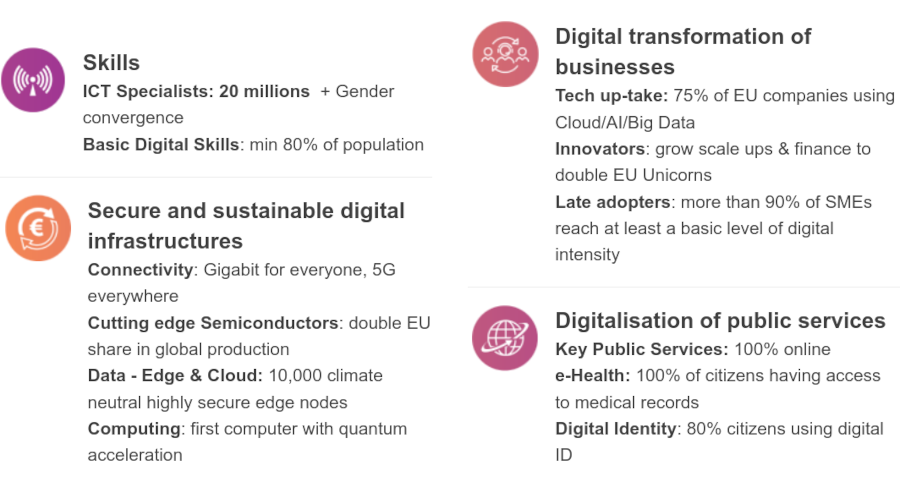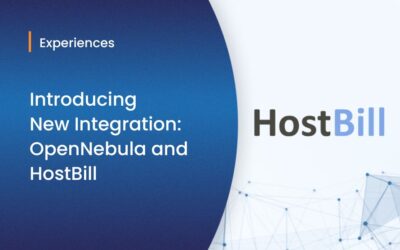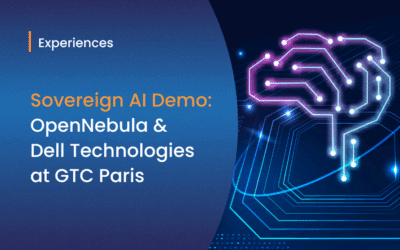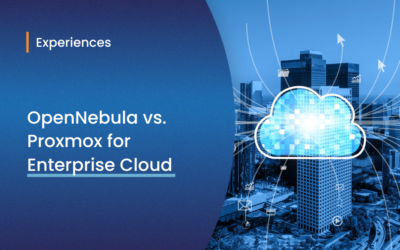Edge computing is becoming increasingly popular nowadays thanks to the growing number of cloud, bare-metal, and 5G providers offering access to IT infrastructure resources in new ‘edge’ locations throughout the world. This new paradigm is based on the concept of moving computational processes away from centralized clouds and large data centers and bringing them as close as possible to mobile devices, sensors, and end-users. This model provides extra security, increases service availability, reduces network latency, and saves energy. All these are major benefits for strategic economic sectors like manufacturing, aerospace & defence, entertainment, tourism, healthcare, and energy, especially for applications that require real-time responses based on live streams of data, such as IoT, video games, VR, smart health, autonomous vehicles, cybersecurity, AI, and machine learning.
It is evident now to many observers that edge computing is gaining momentum—and not just as a fancy buzzword. The global edge computing infrastructure market will be worth up to $800 billion by 2028, according to the report released in March 2021 by the State of the Edge initiative, one of our fellow members at LF Edge. Edge computing and IoT have been identified not only as disruptive technologies, but also as strategic ones for Europe’s digital economy. Today, 80% of data is processed in the cloud, a market currently dominated by non-EU companies. For the smart IoT market, evidence shows that the need for resources at the edge is growing much faster than the demand at cloud data centres. It is expected that in 5 years, 80% of data processing will be taking place at the edge, completely reversing the scenario we can see today. Strong growth in software services, 5G networks, and multi-cloud computing for risk-mitigation are major opportunities for Europe to get back to the forefront of technological leadership, according to the EU revised Industrial Strategy.
The Strategic Role of Open Source and Edge Computing for a Digital Europe

The need to strategically invest in the next generation of European cloud and edge capabilities has been emphasized on several occasions by EU institutions and Member States, such as in the European Foresight Report, in the European Strategy for Data, in the EU Flagship area “Scale up” under the Recovery and Resilience Facility, and in the Member States’ Joint Declaration on Building the Next Generation Cloud in Europe, which included an explicit call for “completely interoperable, open, multi-vendor cloud platforms and services, based on European, international or open source standards” while confirming that “the total funding in cloud and data could reach up to €10 billion”.

Europe’s Digital Targets for 2030
In early March 2021, the European Commission presented its 2030 Digital Compass, defining specific targets for Europe to become a leader in the digital space over the next decade. The document acknowledged Europe’s vulnerabilities, its increased dependency on critical, often non-EU based, technologies, and the reliance on a few big tech companies, with less than 4% of the top online platforms being European. In order to implement that vision, the European Union has agreed to invest at least 20% of the Recovery and Resilience Facility.
One of the specific actions defined by the European Commission identifies edge computing as a strategic technology for Europe’s Digital Decade: their target is to have 10,000 climate neutral highly secure edge nodes deployed across the EU by 2030. In their view, a possible implementation of this objective would involve building a common and multi-purpose pan-European interconnected data processing infrastructure, developing low-latency edge capacities closer to end-users and IoT devices (e.g. at the edge of 5G telecom networks), using secure, low-power and interoperable middleware platforms for sectoral uses, and enabling easy exchange and sharing of data.
European Initiatives in Edge Computing
GAIA-X is a pan-European project launched in late 2019 by the German and French governments and is aimed at creating a federated data infrastructure for Europe. OpenNebula, which had been collaborating in this initiative since early 2020, joined the new GAIA-X Association as a Day-1 Member in November 2020. Now that the GAIA-X new leadership team has announced that the project is finally ready to focus on the delivery of tangible results, one of our main priorities will be to make sure that interoperability and open source principles remain at the core of this initiative, and that corporate users and cloud/edge providers using OpenNebula can get the most out of the resources and services that will be made available through this virtual hyperscaler. We also believe that European open source technologies can play a key role in consolidating a culture of innovation and collaboration within the GAIA-X community, and in helping this project become an effective tool for reclaiming Europe’s digital sovereignty.
In parallel to GAIA-X, a number of EU Member States, led by Germany and France, have gathered to offer a coordinated industrial response with significant European relevance. This is happening under the so-called “Important Project of Common European Interest on Next-Generation Cloud Infrastructure and Services” (IPCEI-CIS)—an initiative in which OpenNebula is also participating as a technological partner. With support from the European Commission, this project is expected to contribute to effectively fostering European data leadership and digital sovereignty, as well as to the flourishing of smart cloud and edge solutions across a multi-provider cloud-edge continuum. One of its main objectives is the development of European open source technologies for the establishment of an efficient, high-performance, highly secure, federated ecosystem with fast data connections and services.
A first EU strategy forum on edge computing, IoT and Edge Computing: Future directions for Europe, took place in September 2020. With over 300 registered participants from industry, academia, and SMEs, this workshop drew attention to the future opportunities of edge computing, including its role in connecting devices and providing orchestration with cloud services, and the importance of integrating connectivity and computing with AI-based reasoning and automation. This first strategy forum was followed in December 2020 by a second one, IoT and Edge Computing II: The Far Edge, with the European Commission confirming their approach based on building an ecosystem where IoT, edge, and cloud converge towards a computing continuum.
Last month OpenNebula was invited by the European Commission to participate as a “Visionary Concept” in the Next-Generation IoT and Edge Computing Strategy Forum, a strategic event designed to discuss Europe’s vision for (far) edge computing in the next-generation Internet of Things. After having been selected at a recent EIC Investor Day as the most exciting technology in the “IoT & Cloud Computing” category—and also as the Best Edge Computing Solution a few weeks later at Layer123 Europe 2021—this strategy forum was a great opportunity for us to explain our vision of edge computing and the details of our EU-funded ONEedge initiative, which is behind OpenNebula’s transformation into a powerful open source cloud-edge orchestration platform.
OpenNebula: an Open Source Cloud-Edge Orchestration Platform for Europe
OpenNebula was born in 2008 as the only open source IaaS solution developed in Europe. Over the years we have been adapting our platform to the rapidly evolving cloud market, investing as much as possible in technological innovation, and developing a sustainable business model around open source. It was thanks to our understanding of the cloud space that, several years ago, we identified edge computing as a disruptive paradigm-shifting technology, a realization that led us to launch the ONEedge project. Now that edge computing has also been identified as a strategic technology for Europe’s digital economy, we can confirm that there is a strong alignment between our vision of the future of the cloud and the bold strategy that the European Commission is putting in place for Europe’s next-generation edge cloud.
As an open source company, we are aware of the importance of providing a vendor-neutral solution to those organizations that need distributed edge environments to meet their ultra-low-latency and data location requirements. That’s why we have focused our efforts on developing the necessary provisioning and orchestration middleware for them to leverage edge resources from not just a few, but a variety of edge infrastructure providers. We know that, apart from existing ones, users will very soon demand access to GAIA-X resources and to the thousands of new edge nodes that are to emerge across Europe in the coming years. An open source solution that ensures workload portability and automation, while preventing vendor lock-in, will be crucial for these organizations and for Europe’s technological sovereignty.

Thanks to ONEedge, and with the support from the European Commission and its Horizon 2020 SME Instrument, we are transforming OpenNebula into a powerful cloud-edge orchestration platform, following a path that is inspired by these fundamental principles:
- Open source democratizes access to next-generation technologies and is a powerful platform for innovation—that’s why it should be at the core of any European edge solution.
- Cloud-edge orchestration platforms should follow a simplicity-by-design approach to reduce complexity, resource consumption, and operational costs, avoiding vendor lock-ins produced by unnecessarily complicated solutions (even if open source).
- Computing functions should be created as an extension of the centralized cloud and use proven cloud management capabilities—that’s why our concept of cloud-edge continuum also includes the core data center / private cloud.
- Users should be able to have access to existing marketplaces with pre-built applications such as PaaS environments, serverless platforms, or container orchestration solutions like Kubernetes, and to manage any workload, including Virtual Machines and application containers in a single environment.
- Edge computing middleware should contribute to minimizing technological dependencies by enabling true multi-cloud interoperability with a uniform view of the underlying resources and workload portability across the existing and future ecosystem of hyperscalers and edge providers.
- Cloud-edge orchestration platforms have to support the automated provisioning and deployment of edge resources, responding dynamically to incidents and changes in the underlying infrastructure, adding and removing new resources whenever and wherever needed in order to meet peaks in demand and fault-tolerance or latency requirements.
These are the principles that guide us at OpenNebula in our mission to develop an open source middleware able to orchestrate and automate operations along the cloud-edge continuum. Our ONEedge strategy is not intended to compete against the main cloud providers: we want to help our users leverage existing resources, but we also believe that with our technology we can significantly contribute to fostering the emergence of new, local edge providers across Europe. That’s why we are working to build strong relationships with cloud/edge resource providers of all types—including telecommunications companies and 5G providers—to make sure that our technology is able to respond to the real needs of our users, turning the intrinsic heterogeneity of the edge into a substantial advantage.
Right now, OpenNebula provides a powerful alternative that prevents vendor lock-in, enabling private clouds to extend to the edge and make use of infrastructure provided by hyperscalers and telcos, too, with a technology that can also be used by new edge providers to offer their own infrastructure to customers. OpenNebula is committed to contributing with ONEedge to the EU’s strategic plans to foster the use of edge computing and the emergence of a strong edge cloud infrastructure in Europe. This manifesto is also an open invitation to other EU open source companies, cloud providers, telecommunications operators, developers, and new edge providers to join us in this mission to develop a vibrant open source ecosystem around Europe’s next-generation edge cloud.
🚀 Looking for an open source edge computing platform? OpenNebula comes with the new edge computing features developed in the context of the ONEedge project for deploying distributed edge clouds—so try it out for yourself!







0 Comments